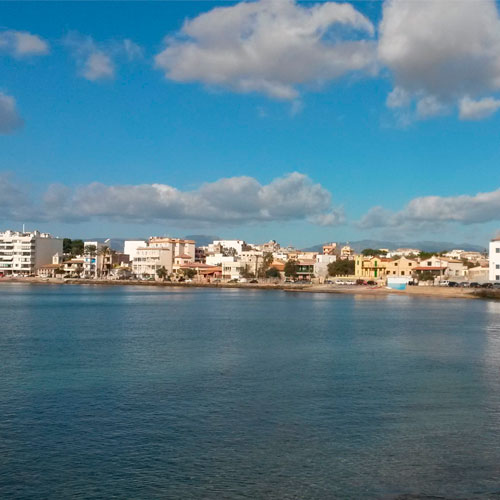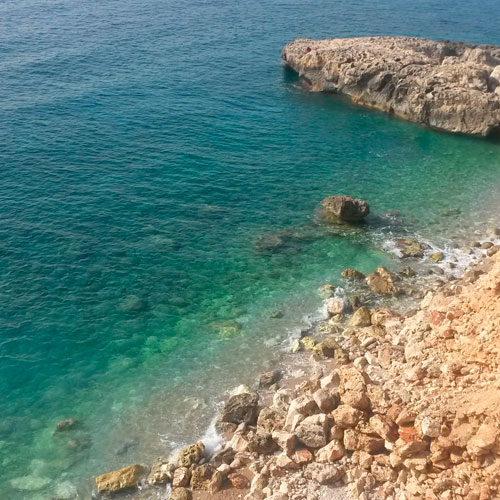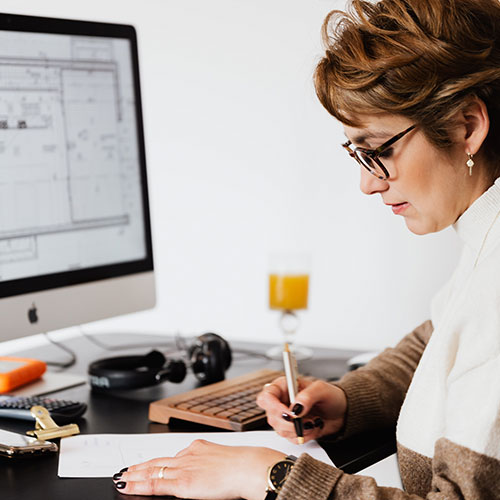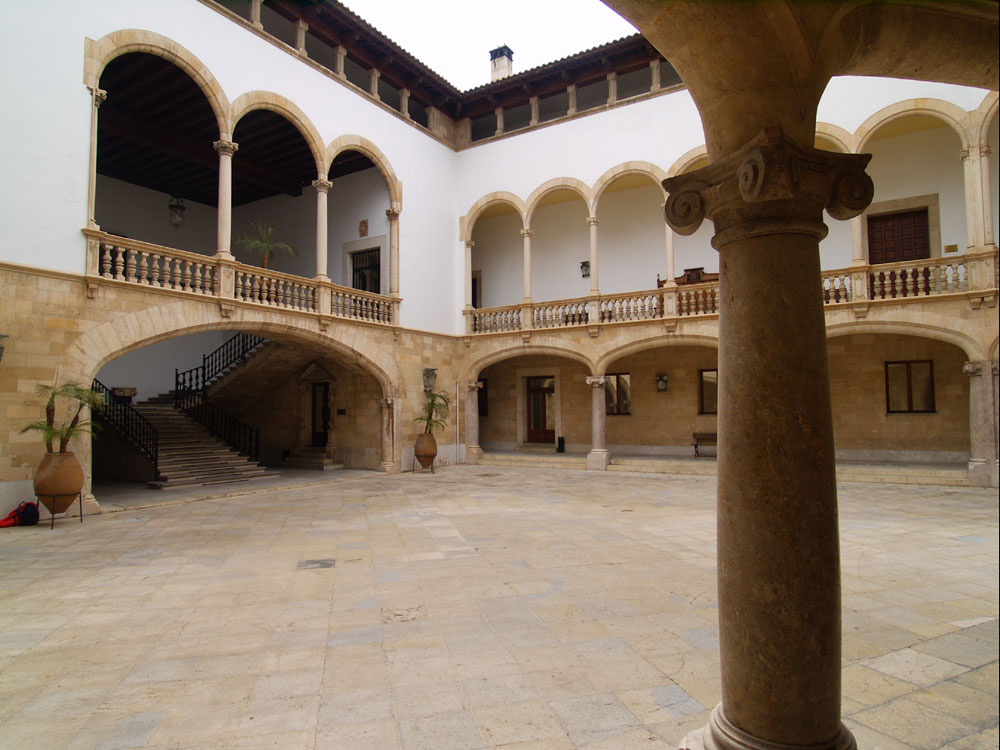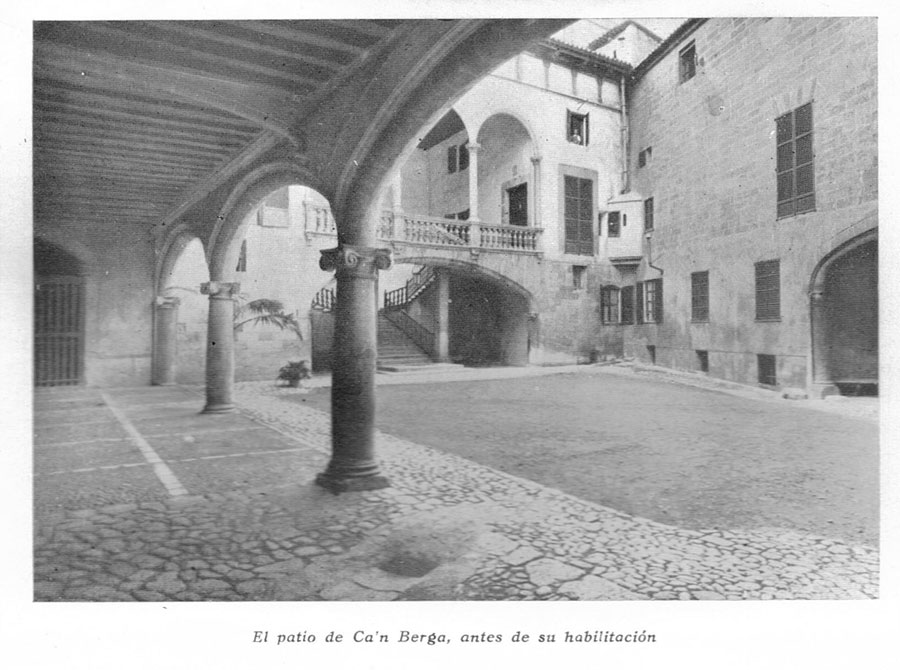Can Berga - Tourism
Can Berga
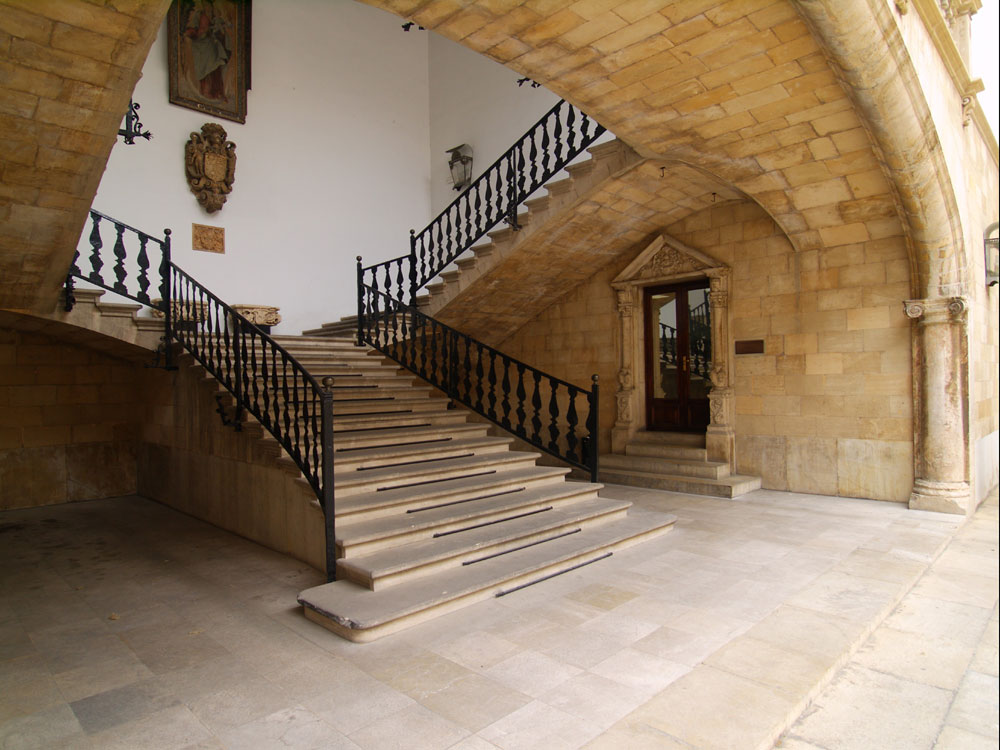
The façade has a simple design with very few ornaments, although there are two large balconies with moulded sills and a balustrade. Above the rounded doorway, there is an elegant family coat of arms for the Berga family, the work of Juan Deià. Beneath the cornice the porch features nine moulded windows.
The inner courtyard has a vast, irregular polygonal floor surrounded by ten segmental arches resting on Corinthian columns. A large segmental arch opposite the main doorway leads on to the imperial staircase consisting of a single flight of stairs that splits into two after the first landing. Both sides of the staircase lead to broad Renaissance doorways. These feature the coat of arms of the Zaforteza family as well as anthropomorphic, sculptural decorative details: it is interesting to note that the doorways originally belonged to another house. The coat of arms of the Burgues-Zaforteza presides over the landing: the weapons of the four families (Zaforteza, Oleza, Verí and Sureda) divide the coat of arms into four sections with the common connection (the Burgues family) in the centre. The atrium on the piano nobile consists of three rounded arches with a balustrade in the lower section. On the ground floor, the cloister is surrounded by several segmental arches. On the first floor, the arches become rounded. The porch, on the third floor, has traditional octagonal pillars.
History
An old Islamic-style building that housed a convent of Augustinian nuns between the years 1231 and 1278 used to occupy the site where Can Berga now stands. The Franciscans moved their first convent located next to the Puerta Santa Margarita, then called the Puerta del Destructor, to the Augustinian convent. The Franciscans stayed in this convent only for a short time, as two years later they established themselves in the current convent of San Francisco. Until the 18th century, the main entrance and principal façade of the building located at the Plaza del Mercado faced onto Calle Santacília in order to avoid floods caused by the Riera torrent. The building was purchased by Hugo de Pacs, who turned it into his family residence. In the year 1600 the building passed to the Santacília family on the marriage of Margarita de Pacs y Burgues and Joan Miquel de Santacília y Togores. Pere de Santacília y Pacs, the son of that couple ¿ and a famous brave knight and outstanding warrior in the bloody feuds of the Canamunt and Canavall clans during the 17th century ¿ also lived here.
On the death of Eleonor de Santacília in the year 1677, wife of Gabriel Berga y Sanglada, the house was inherited by the Berga family. Eleonor's son, Gabriel de Berga y Santacília, died in 1706 defending the cause of Philip V during the War of the Spanish Succession.
Shortly before 1754, Gabriel de Berga y Zaforteza ordered substantial renovation work to the building, which transformed it into one of the most characteristic baroque buildings in the city. The project was completed in the year 1760 when the house was already in the possession of Cecília Zaforteza y de Berga. Gabriel Pons was the master builder behind the work and Juan Rotger was responsible for the carpentry, while Juan Deià worked on the building as a sculptor. By the end of the 18th century, after several testamentary lawsuits, the Berga heritage was distributed among members of the Burgues-Zaforteza and the Quint-Zaforteza families. The house ended up being owned by the former, henceforth known as the "Zaforteza del mercado" ("the Zafortezas of the market") while the Quint family became known as the "Zaforteza del Born" ("the Zafortezas of the Born neighbourhood"). In 1942 the building was sold to its current owner, the Ministry of Justice. In 1965 the building was subject to numerous modifications due to renovation works that were carried out to home the Regional Courthouse. One of the modifications changed the main access to the piano nobile, meaning that the staircase was moved from the right to the centre.
Date last modified: March 13, 2023


